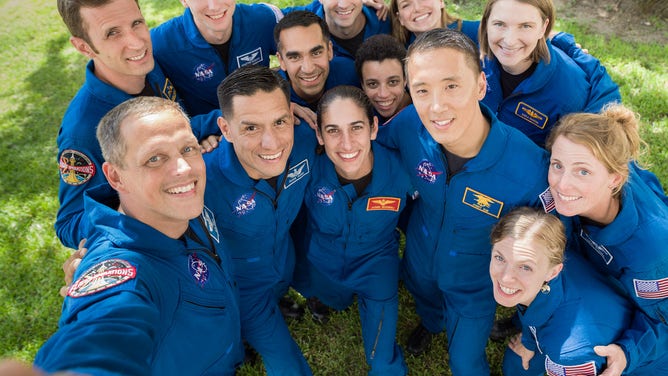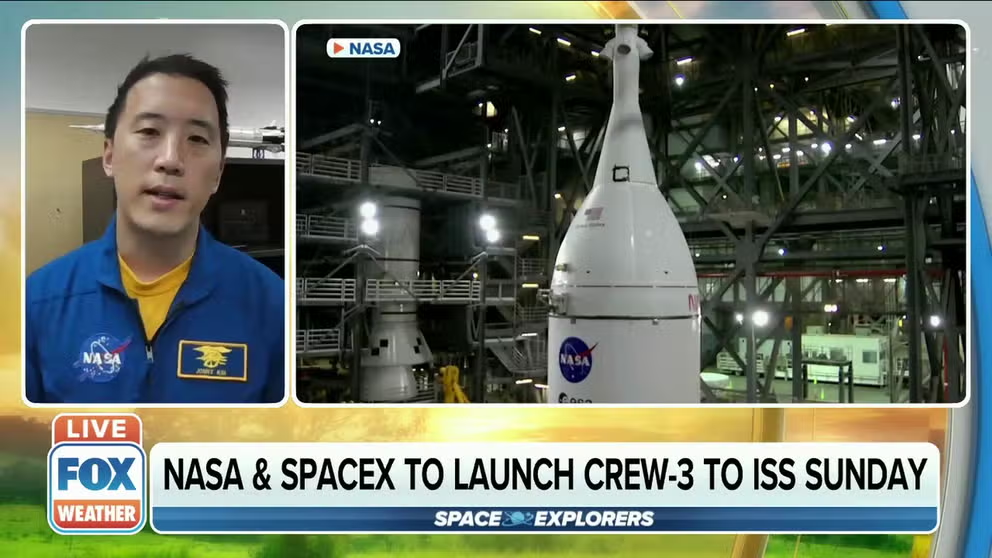Astronaut Jonny Kim explains how every spaceflight brings NASA closer to moon return
Dr. Jonny Kim is among the NASA astronauts selected for the Artemis moon program.
NASA Astronaut Jonny Kim joins FOX Weather ahead of Crew-3 launch
On Sunday, NASA and SpaceX are launching the third rotation of astronauts to the International Space Station from American soil in a fully reusable spacecraft for a planned mission duration of about six months.
With every human spaceflight, NASA's return to the moon inches closer, according to NASA Astronaut Dr. Jonny Kim.
"I think every mission we do to space prepares us for the next step pushes the envelope a little bit further helps us understand what we know, what we don't know," Kim told FOX Weather ahead of the Crew-3 launch. "So this launch and many others in the future are all going to contribute when we finally take those first steps."
NASA and SpaceX are preparing to launch four astronauts, three American and one European, to the International Space Station Sunday morning. Kim will be watching his friends and coworkers blast off, knowing his turn will be coming up soon.
"I'm really excited to see some of my closest friends on the tip of that rocket launch to space," Kim said. "It's just a really emotional experience, especially when you know the people that are on the tip of that rocket."
Two of Kim's 2017 NASA astronaut class members, Kayla Barron and Raja Chari, will be on the Crew Dragon spacecraft bound for low-Earth orbit. NASA astronaut Tom Marshburn and European Space Agency Astronaut Matthias Maurer make up the other half of the Crew-3 mission.

The members of the 2017 NASA Astronaut Class are (from left) Josh Kutryk, Bob Hines, Warren Hoburg, Frank Rubio, Raja Chari, Matthew Dominick, Jasmin Moghbeli, Jessica Watkins, Jenny Sidey, Jonny Kim, Kayla Barron, Zena Cardman, and Loral O' Hara. Photo Credit: NASA/Bill Stafford
(NASA)
The astronauts will spend six months living in space conducting experiments to further our understanding of microgravity's impacts on the body and other scientific research.
"I think the most obvious one that we have a great success story of combating is the effects that microgravity has on our bone function," Kim explained. "Our bones are a really complex interweave of tissue and cells, and it provides us the ability to withstand the forces of gravity. When we don't have that, our bones are bone density decreases significantly."
One of the countermeasures astronauts can do in space to minimize the wear on their bodies is exercise.
"You need to work out these astronauts when they're a space. They need to be squatting. They need to be lifting. They need axial loads, and so we have machines on the space station that basically provide an opportunity for astronauts to work out and lift weights as if they were on the ground here."
Kim is among the NASA astronauts selected to be part of the Artemis program, returning humans to the moon. The 2017 NASA astronaut class, known as the "Turtles," makes up seven of the 18 potential moonwalkers picked by the space agency.
Every long-duration spaceflight helps the space agency prepare for human travel to the moon, explains Kim.
"We're doing science projects every single day learning more about immune cell function, how our bodies react to long-duration spaceflight," Kim said. "There is microgravity on the orbiting lab that we call the International Space Station, and that does some funky things to our body when we don't have the presence of gravity interacting with us."
For humans to live and work on the moon and, eventually, Mars, Kim said understanding these impacts are paramount.
Kim's experiences as a medical doctor and a U.S. Navy SEAL with two overseas deployments and more than 100 combat operations have prepared him for spaceflight.
"I think it prepared me in the same way that we prepare ourselves for a lot of difficult things, challenging ourselves working with teammates who accomplish a mission," Kim said. "And those are the same traits that I really see and enjoy with my colleagues that are about to launch here in space very soon."
NASA plans to launch the Artemis rocket, known as the Space Launch System, from Kennedy Space Center in February 2022. The first human flights could happen in 2023.
